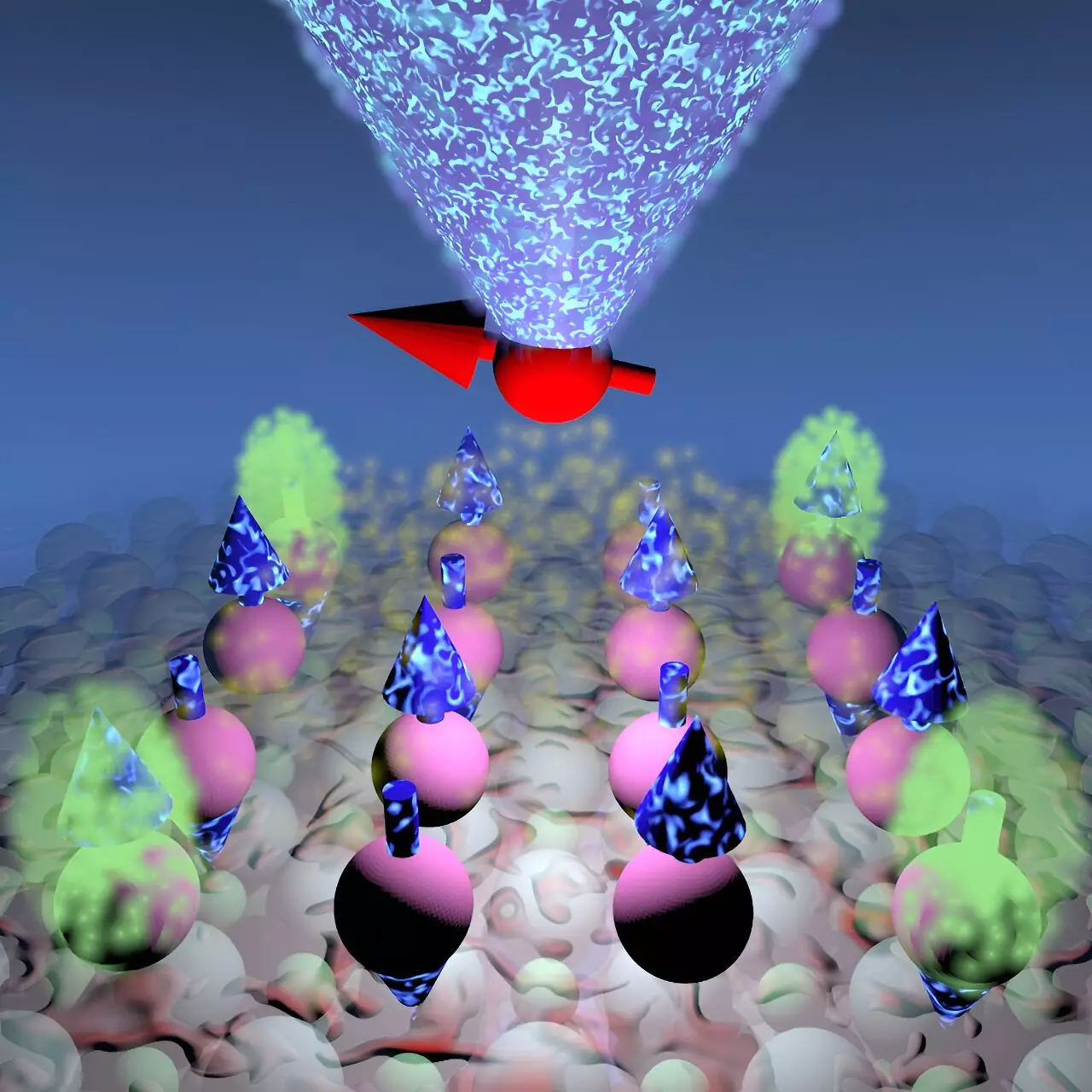In the universe of quantum physics, when distinct quantum states fuse, they often give rise to new, collective states of matter that exhibit unique properties. The phenomenon unfolds as atoms, demonstrating quantum behavior, culminate in macroscopic quantum states. These states can engender exotic excitations uniquely found in such high-dimensional quantum environments. Recent collaborative efforts between researchers at Aalto University and the Institute of Physics CAS have brought to light an innovative outcome: an artificial quantum material meticulously synthesized from the ground up using magnetic titanium layered upon a magnesium oxide substrate. This carefully crafted material allows scientists to probe and manipulate quantum behaviors in ways previously deemed unachievable.
Leading the theoretical framework was Jose Lado, an assistant professor at Aalto University, whose design aims to induce a novel form of quantum matter—topological quantum magnetism. The empirical side of the research was spearheaded by Kai Yang, an associate professor at the Institute of Physics CAS, whose team harnessed the power of atomic manipulation techniques, specifically scanning tunneling microscopy. This groundbreaking research culminated in the first demonstrated instance of a higher-order topological quantum magnet. The implications of this discovery are noteworthy; they suggest a potential route toward enhancing stability against decoherence in quantum technologies, an essential hurdle that must be overcome to enable practical quantum computing.
The significance of the newly formed topological quantum magnet extends beyond theoretical curiosity. The material’s unique structure hosts exotic excitations, characterized by fractional behaviors that diverge starkly from conventional magnetic entities. These merged states exemplify quantum superposition principles, bridging a gap between the microscopic quantum world and macroscopic realities. The meticulous assembly further enabled researchers to infuse the material with highly unexpected properties, which could enable the exploration of revolutionary physical phenomena unattainable with contemporary quantum materials.
As observed within the artificial quantum construct, the precise control over atomic interactions was achieved through an innovative method where researchers systematically interacted with individual atoms using a nanoscopic metallic tip. This operation allowed them to excite discrete atomic magnetic moments, leading to the emergence of topological excitations characterized by enhanced coherence.
Jose Lado emphasizes that one of the pivotal features of topological excitations lies in their resilience against decoherence. As quantum computing systems continue to evolve, the challenge of maintaining the integrity of qubits, the fundamental units of quantum information, remains a paramount concern. The topological quantum magnet presents a promising solution; its exotic excitations appear capable of safeguarding quantum information from disruptions that can easily affect conventional qubits.
In their empirical investigations, the researchers noted a remarkable characteristic of these topological states—their resistance to perturbative factors. This resistance aligns well with Lado’s theoretical predictions, further validating the underlying principles governing their behavior. More intriguingly, it was discovered that the coherence exhibited by these topological excitations surpassed that of their individual atomic components, hinting at a transformative shift in how quantum information could be protected and manipulated.
Avenue for Future Quantum Technologies
The potential applications of topological quantum magnets could reshape the landscape of quantum technology. By harnessing the unique characteristics of these materials, scientists could develop new quantum systems that outperform current iterations, overcoming many existing limitations in coherence and stability. The groundwork laid by this research propels the scientific community into a new era where exploration into topological quantum many-body states opens new avenues for innovation in quantum computing and information technologies.
Overall, the collaborative efforts of Lado and Yang highlight an exciting juncture in quantum research, merging theoretical insight with practical application. As researchers continue to unlock the secrets of topological materials, the implications for future quantum technologies remain immense, promising a spectrum of possibilities that could redefine our understanding and utilization of quantum phenomena.

